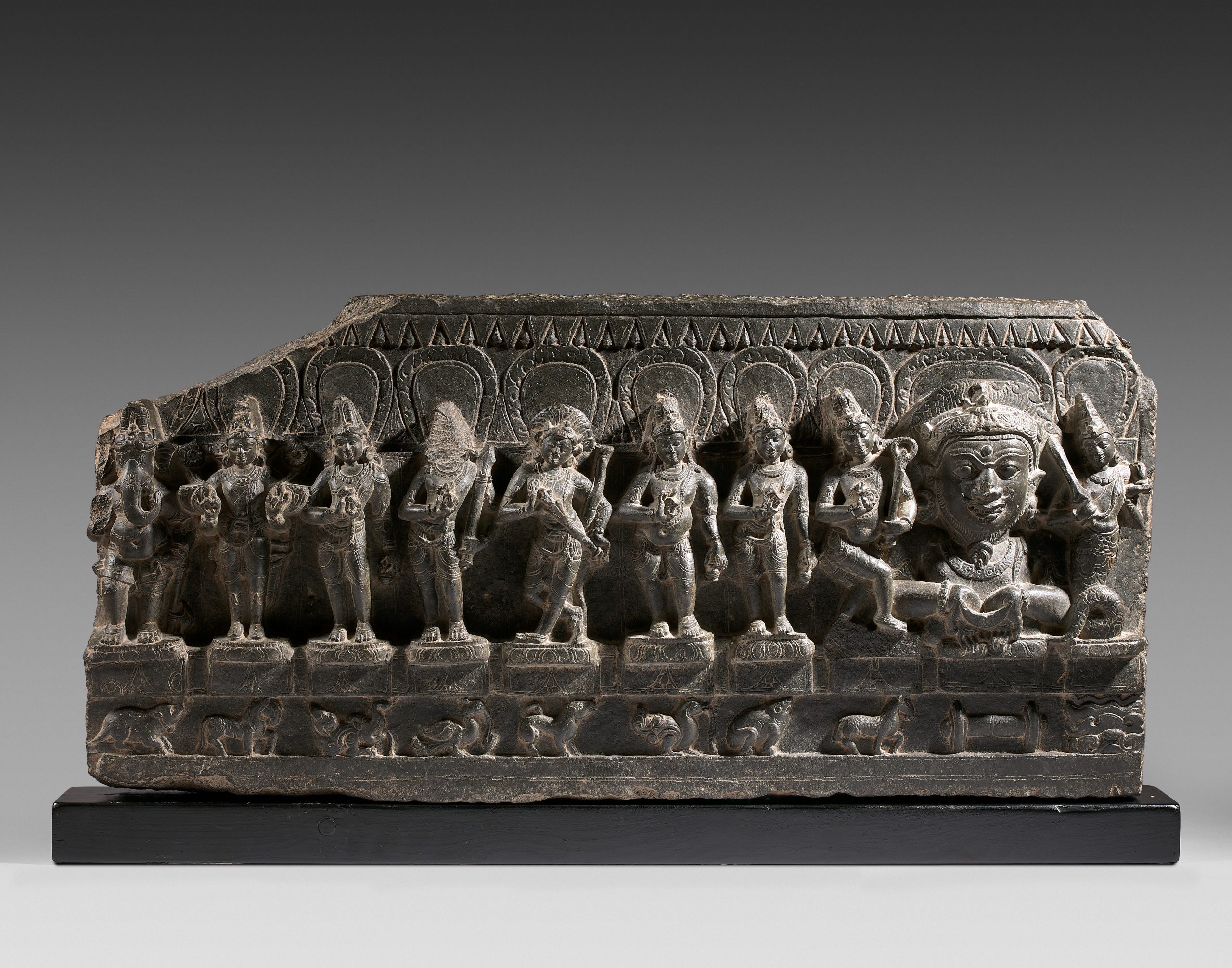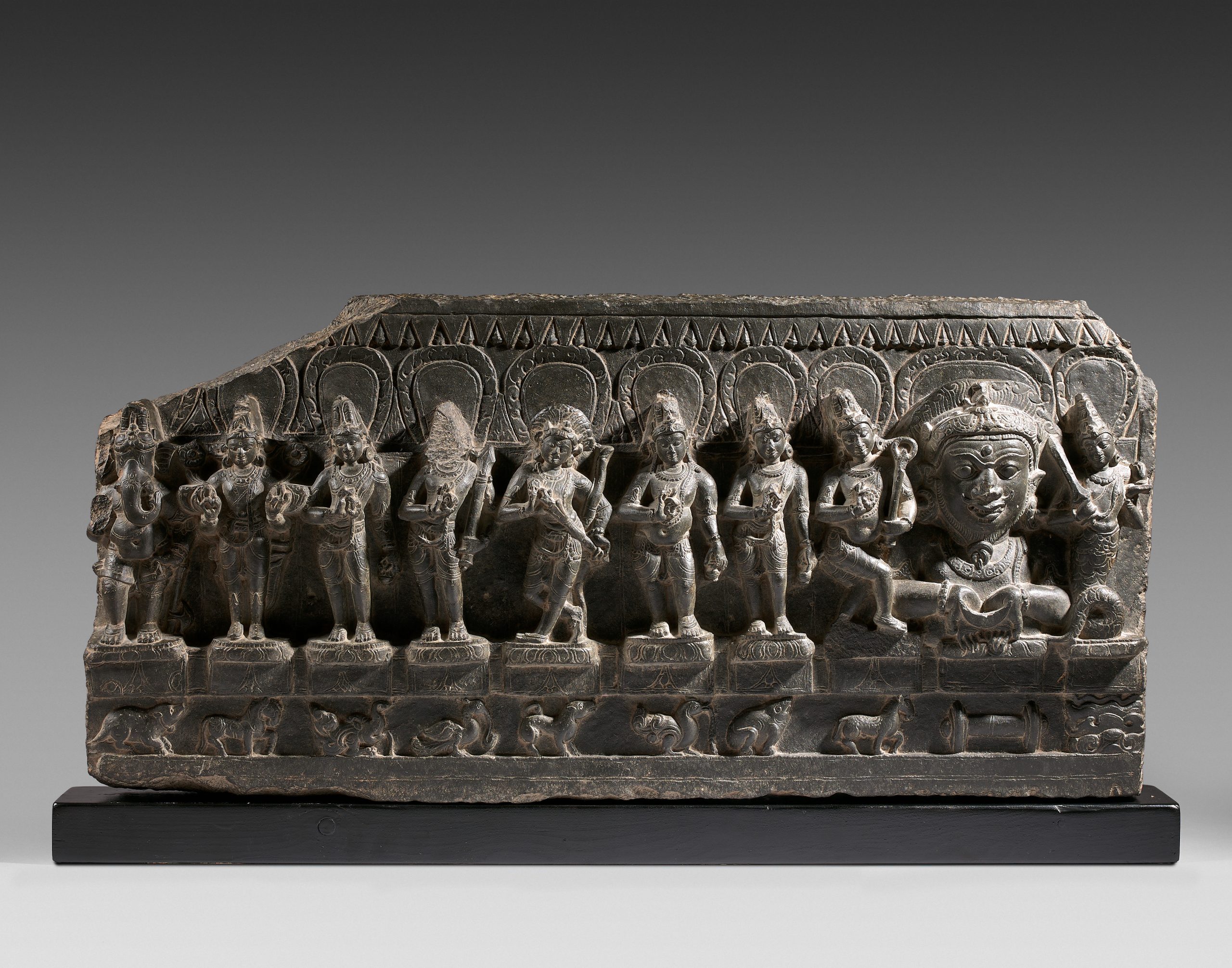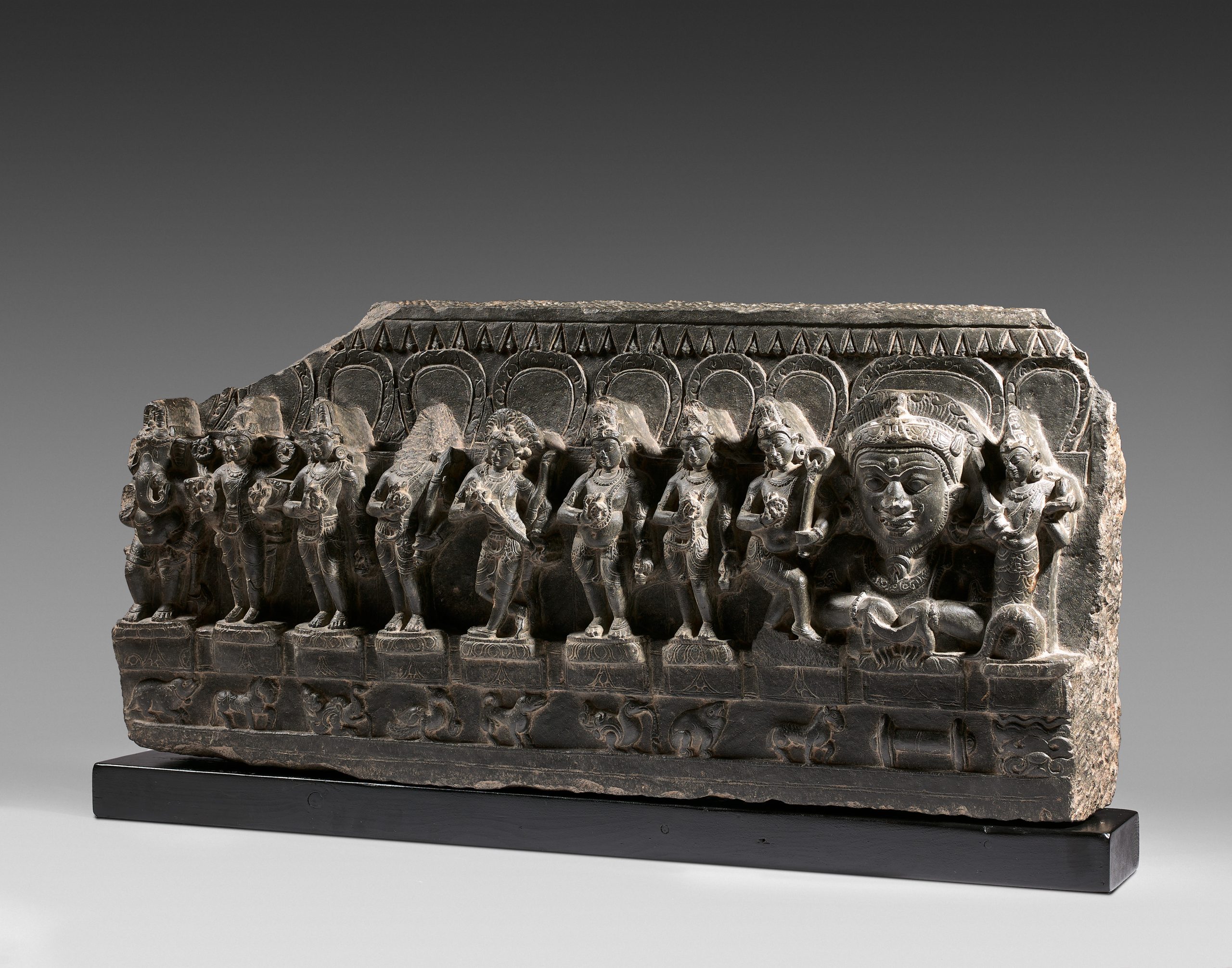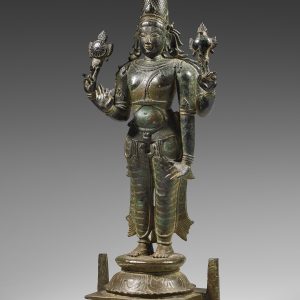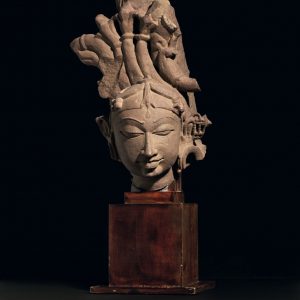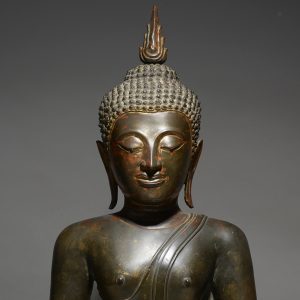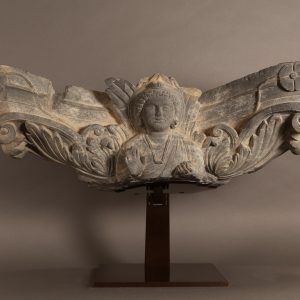The Navagraha
Black stone
North-east India (Bihār, Bengal)
11th-12th century, Pāla period
H. 37; L. 78 cm
Description
The Navagrahā represent the divinised planets, playing a role in the destiny of beings. The work is well-preserved, with all nine deities intact. The varied positions and sinuous modelling give the bas-relief an elegant appearance, underlined by the refinement of the black stone. The faces of the divinities are surprisingly delicately modelled, with a sense of detail that testifies to the sculptor’s virtuosity. It is also worth noting that each of them is depicted with its attributes, and its mount in the lower frieze, making it easy to identify them.
The iconography of the nine planets is a classic scheme. The last two are actually astronomical phenomena: Rāhu is the deity of the eclipse and Ketu, with a serpent’s tail, is the comet. According to the legend of Rāhu’s origin, the gods churned the sea of milk to extract the elixir of immortality. The demon Rāhu, noticing this, tried to seize the elixir. Sūrya and Chandra, the sun and moon respectively, denounced him to the god Viṣṇu, who to punish him decapitated him using his cakra, a disc with a sharp edge. However, a drop of the elixir had fallen on Rāhu’s tongue, and his head remained immortal. Driven by a desire for vengeance, Rāhu set out in eternal pursuit of the sun and moon, seeking to devour them. Since the demon has no body, the sun and moon keep escaping through its severed neck, causing eclipses.
This bas-relief was originally on the lintel of a sanctuary door. It is a symbolic place signifying good fortune. All nine deities are present, each with their own distinctive iconography. On the left are Ganesh, but also Surya, Chandra, Mangala, Buddha, Brhaspati, Shukra, Shani, Rahu with the lunar disc and Ketu with the body of a snake, surmounting a lotiform throne.
Provenance: Christie’s Amsterdam 2006, then private collection in the Netherlands.

